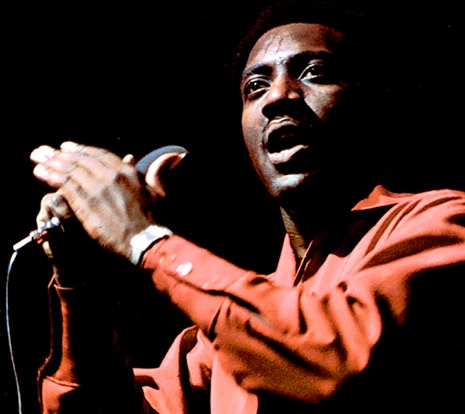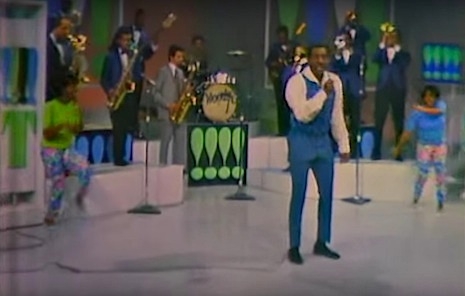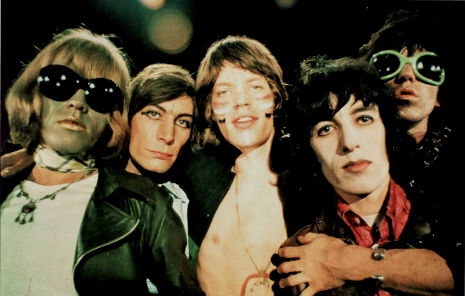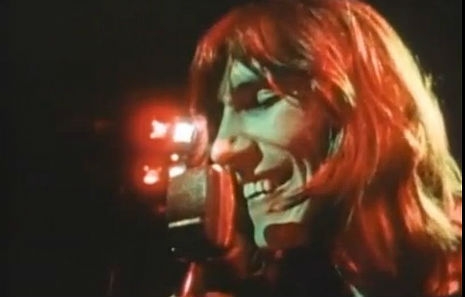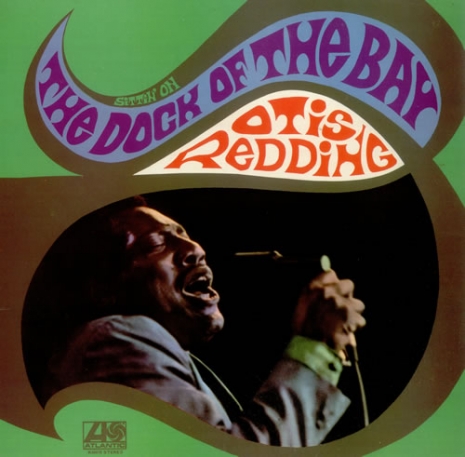
Otis Redding‘s famous set at the Monterey International Pop Festival was just a few weeks behind him in the rearview mirror and he sensed that he was on the cusp of becoming a very big star, his crossover appeal to young white audiences already proven by his reception for that legendary performance. He could become one of the “greats,” like Ray Charles or Sam Cooke. Redding—the epitome of the Stax Records sound—was hoping to move beyond the soul shouters he was known for and into something more complex musically. Something that was more along the lines of the Beatles’ Sgt. Pepper’s. Additionally that fall he’d had throat surgery and wanted to develop some numbers less demanding on his vocal cords.
Redding was playing a six-night residency at Basin Street West in San Francisco and had been staying at a houseboat owned by rock promoter Bill Graham that was docked in Sausalito. It was here where he saw the ships rolling in from San Francisco that inspired “(Sittin’ On) The Dock of the Bay.” He very simply and directly wrote about what he was experiencing one perfect sunny California day:
“I left my home in Georgia,
Headed for the Frisco bay”
This much was surely true: Redding was born in Macon, although it was his co-writer Steve Cropper (of Booker T. & the M.G.‘s AKA the Stax house band) who suggested that bit.
“If you listen to the songs I wrote with Otis, most of the lyrics are about him. He didn’t usually write about himself, but I did. “Mr. Pitiful,” “Sad Song Fa-Fa,” they were about Otis’ life. “Dock Of The Bay” was exactly that: ‘I left my home in Georgia, headed for the Frisco Bay’ was all about him going out to San Francisco to perform.”
I think it’s pretty safe to assume that this entire verse came from direct personal experience well:
Sittin in the morning sun,
I`ll be sittin’ when the evening come,
Watching the ships roll in,
And I’ll watch ‘em roll away again, yeah,
I’m sittin’ on the dock of the bay,
Watching the tide roll away, ohh,
I’m just sittin’ on the dock of the bay,
Wasting time.
But while these words are on a surface level merely descriptive of a day of (apparent) mundane laziness experienced by an up-and-coming Georgia-born soul singer chilling out on a sunny dock, for the past half century, each and every person who has ever listened to Otis Redding sing those immortal words has been able to adapt the song to their own circumstances, and mentally project their own lives onto it, whether or not they were fishing or barbecuing on a hot summer day with a cool beverage in their hand or standing with a gun in a rice paddy in Vietnam. It’s one of those “one-size-fits-all” occasion classics that can be happy or sad depending on who sings it, or how.
It’s a mirror of humanity itself in that way and this is the reason why music licensing company BMI has cited “(Sittin’ On) The Dock of the Bay” as being the sixth-most performed song of the 20th century. It’s been covered by the likes of Cher, Peggy Lee, Bob Dylan, Waylon Jennings and Willie Nelson, Dennis Brown, Jacob Miller, Pearl Jam, even T.Rex (Bolan’s version was on the B-side of his “Dreamy Lady” single in 1975). Sammy Hagar and Michael Bolton have both covered the song. All in all, BMI has clocked over six million known performances. That’s not including all the karaoke renditions.
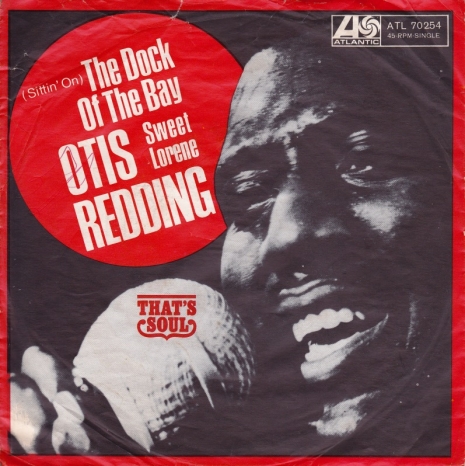
“(Sittin’ On) The Dock of the Bay” is recalled by most people as having a joyful or whimsical message, but just two lines later than what’s quoted above he’s singing:
“I have nothing to live for,
Look like nothing’s gonna come my way”
The lazy day in the sun gives way to a far bleaker-sounding reality, but no one ever uses the latter verses in TV commercials or rom coms:
“Sittin’ here resting my bones,
And this loneliness won’t leave me alone, yes,
Two thousand miles I roam
Just to make this dock my home”
Redding didn’t have much more than the basic chords, first verse and the chorus when he brought the song to Steve Cropper. Cropper wrote the bridge trying to ape the style of the chart-topping Association. Redding’s manager Phil Walden and Stax Records’ Jim Stewart were unsure of their artist’s search for a new direction, but not even his own wife Zelma was not all that encouraging of what she’d heard of his new style. Cropper and Redding felt sure that they’d written a #1 hit.
When Redding and Cropper recorded the song, they had yet to come up with a final verse, so Otis just whistled it. The plan was for him to return to Memphis and fill in that last verse after performing a set in Madison, Wisconsin, but that never happened. When Steve Cropper produced the song, he left the whistling in,and it is probably the most famous whistling in any song. Sound effects of water, seagulls, and so forth were added to the unfinished recording by Cropper with Stax Records’ newly purchased 4-track recorder.
“(Sittin’ On) The Dock of the Bay” went to #1 as Redding and Cropper predicted and it won Redding a posthumus 1968 Grammy Award for Best Rhythm & Blues Performance, plus the Best Rhythm & Blues Song for writers Redding and Cropper. It’s been fifty years since mankind first heard this classic song and that’s an anniversary worth marking.






